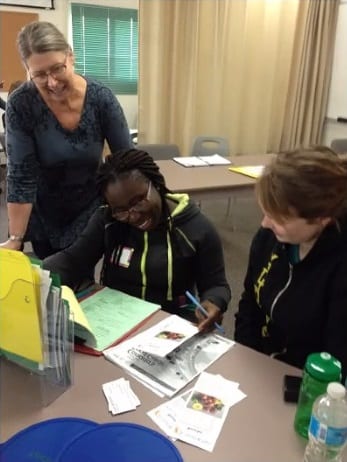Violence against women in the NWT is 10 times the national average and the birth rate is dropping, while encouraging new mothers to breastfeed their babies is producing mixed results across the NWT.

Photo courtesy Aurora Research Institute
That's the latest update on the state of women's health in the NWT, which Aurora Research Institute (ARI) health research program manager and instructor Dr. Pertice Moffitt gave a summary of as part of the ARI's Virtual Speaker Series on Jan. 13.
Moffitt went over the highlights of 10 years of social science research on numerous women's issues across the north, largely from a research program she built herself across the north covering the entire lifespan.
"I have viewed the world through a gendered lens since I was a child," she said. "Women's health, if we were looking for a definition of it, is the effect of gender on disease and health that encompasses a broad range of biological and psycho-social issues."
That range has lead Moffitt to work on programs ranging from studying infant feeding and violence against both women and children to establishing programs to bring teddy bears to hospitals and establishing a northern nursing curriculum.
One area she's currently working on is writing up a history on the school of nursing in the north and recently completed a study of the quality of life in older adults where she found that having strong social connections and supports, an active and independent lifestyle, feeling safe and secure and keeping close to traditional lifestyles, living off the land and knowing their place and home, were associated with a strong quality of life.
In contrast, the ongoing consequences of colonialism weighed deeply on older adults, in particular the repercussions of residential schools and the loss of cultural traditions. The high cost of living and health concerns, alcohol and drug addictions and overcrowding in poor housing conditions, social isolation, as well as the pollution of traditional foods, were all identified as detractors from quality of life.
Moffitt also recently completed a study on breastfeeding in the north, finding that while 82 per cent of mothers begin breastfeeding their babies in the hospital, the number who carry on the practice at home for six months or longer drops off significantly, from 17 per cent to 60 per cent across the territory.
Another area of focus for Moffitt is combating diabetes in the territory. According to the department of Health and Social Services (HSS), in 2016 approximately 10 per cent of people over 24-years of age had type 2 diabetes.
To reverse the trend, Moffitt contributed to an project called HealtheSteps that monitored diet and exercise, which was shown to increase physical activity in participants up to 18 months after the study.
Moffitt also gave a shout out to several students who helped out during the project.
"We had student coaches who worked within the project," she said. "They act as coaches for both faculty and other students. Education is very empowering for women."
Noting HSS also reports police reported violence against women in the NWT is 10 times the national rate, Moffitt also discussed the state of intimate partner violence in the north, which not only stemmed out of the violence of residential schools but was exasperated by a lack of resources to combat the problem.
She added there were many systemic and social factors influencing the high rate of violence against women, including poverty, unemployment, lack of housing, underfunded early life education, gender, health services, social exclusion, substance abuse and getting transportation out of dangerous areas.
"There is violence in every community in the north. That's a statistic we really want to change," she said. "One of the most significant barriers to women's health in the NWT is intimate partner violence."
The solution, she said, was to bring resources together under one authority so women did not have to "shop around" for services to help them get out from under adverse conditions.
Next on Moffitt's to-do list is the Canadian Domestic Homicide Prevention Initiative for Vulnerable Populations — an online conference happening in May to help address the factors leading to domestic violence in the north. The study maintains a domestic homicide data and runs domestic violence review committees, which Moffitt would like to bring to the north.
"These are multidisciplinary advisory committees of experts," she said. "They review deaths and try to identify where could have we intervened to prevent this tragedy, so hopefully we don't have more deaths.
"One woman or girl is killed every other day, on average, somewhere in our country."
As of 2020, there are 21,930 women living in the NWT, making up slightly less than half the total population of 45,161. Of that, 14,146 are between ages 25-44 and 6,594 are over 60 years old, which are the fastest growing group in the territory. Annual births have been trending downward, with 581 recorded births in 2019 compared to 711 in 2009.
